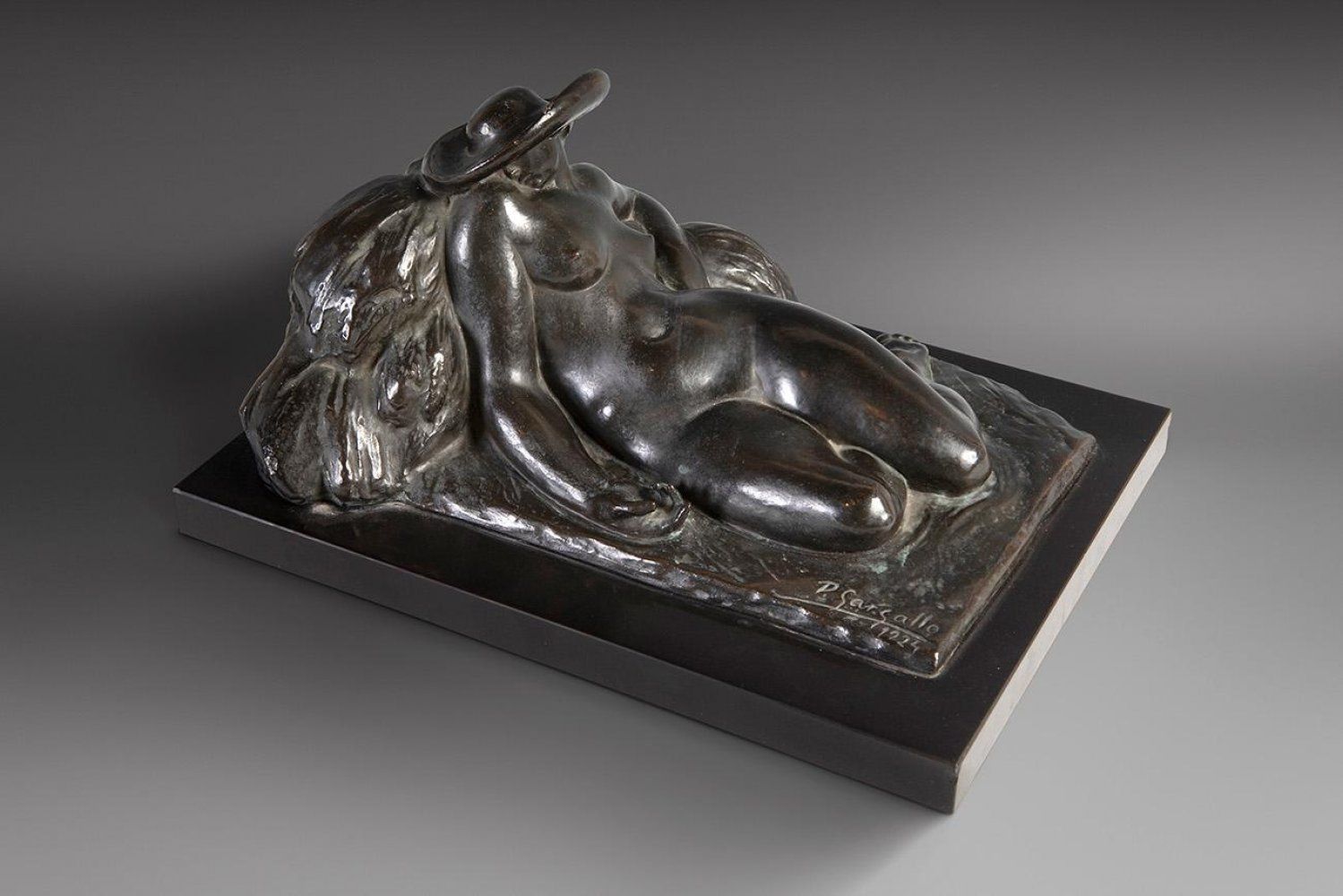Description
PABLO GARGALLO CATALÁN (Maella, Zaragoza, 1881 - Reus, Tarragona, 1934)._x000D_
PABLO GARGALLO CATALÁN (Maella, Zaragoza, 1881 - Reus, Tarragona, 1934)._x000D_ "Sleeping" or "The Reaper", 1924._x000D_ Sculpture in patinated bronze on marble base, copy 6/7._x000D_ Posthumous edition of 1974._x000D_ Signed, dated and numbered._x000D_ The sculpture of the same characteristics made in 1924 is referenced in the artist's catalogue raisonné._x000D_ Size: 12 x 25,5 x 18 cm (sculpture); 2 x 20 x 27,5 cm (base)._x000D_ "Sleeping" or "The Harvester" personifies, through an opulent female nude lying on sheaves of wheat, the spirit and image of the Catalonia Gargallo loved. Made by the Aragonese artist in 1924, the year in which he settled permanently in Paris and began one of the most interesting periods of his artistic career, there are other examples of this sculpture in the Museo Nacional Centro de Arte Reina Sofía and the Museo Nacional de Arte de Cataluña._x000D_ Pablo Gargallo is considered the forerunner of iron sculpture, and learned the technique of forging from his father, who owned a blacksmith's shop. In 1888 his family emigrated to Barcelona for economic reasons and there he began his artistic training in the workshop of the sculptor Eusebio Arnau and at the La Lonja School, with Venancio Vallmitjana as his main teacher. At the height of the Modernist movement in Barcelona, Gargallo frequented the gatherings at "Els quatre Gats", establishing relationships with artists such as Nonell and Picasso. This is why his early works were influenced by Modernisme, as in the case of the decoration of buildings in Barcelona that he did in collaboration with the architect Domènech i Montaner, such as the Hospital de la Santa Creu i Sant Pau and the Palau de la Música. In 1903 Gargallo was awarded a grant that enabled him to travel to Paris to complete his studies. His stay in the French capital was brief, but from then until 1923, when he settled permanently in Paris, he made frequent trips there. In Paris he encountered the aesthetic formulations of Cubism, assimilated its expressive systems and sought the schematism and essentiality of figures and objects in an attempt to find the authentic three-dimensional expression of the Cubist postulates. Around this time he began to use metallic materials such as sheet metal, copper and iron. Around 1911-12 he produced his first masks, highly simplified pieces made from cut-out sheet metal and linked to the Cubist aesthetic. Using sheet metal, Gargallo began to suggest volumes and to exalt voids through the penetration of light into interiors. In 1920 he was appointed professor of sculpture at the Escuela Técnica de Oficios Artísticos de la Mancomunidad de Cataluña, a post from which he was removed in 1923 for political reasons. It was then that Gargallo settled permanently in Paris with his wife and daughter. From then on his style took on a very personal dimension, derived from his interpretation of Cubism, based on the search for a formal synthesis of the figure in ever-fluid geometric planes, replacing conventional materials with sheets of wrought iron, and introducing a new sculptural language by introducing the void as volume and endowing his figures with great expressive drama. Throughout his life, Gargallo developed two apparently opposing styles in parallel: one with classical roots, related first to modernism and later to noucentisme, and the other avant-garde, which experimented with the disintegration of space. Pablo Gargallo is currently represented in the museum that bears his name in Zaragoza, the MoMA in New York, MACBA in Barcelona, the Musée d'Art Moderne in Paris and the Reina Sofía in Madrid, among many others.
78
PABLO GARGALLO CATALÁN (Maella, Zaragoza, 1881 - Reus, Tarragona, 1934)._x000D_
